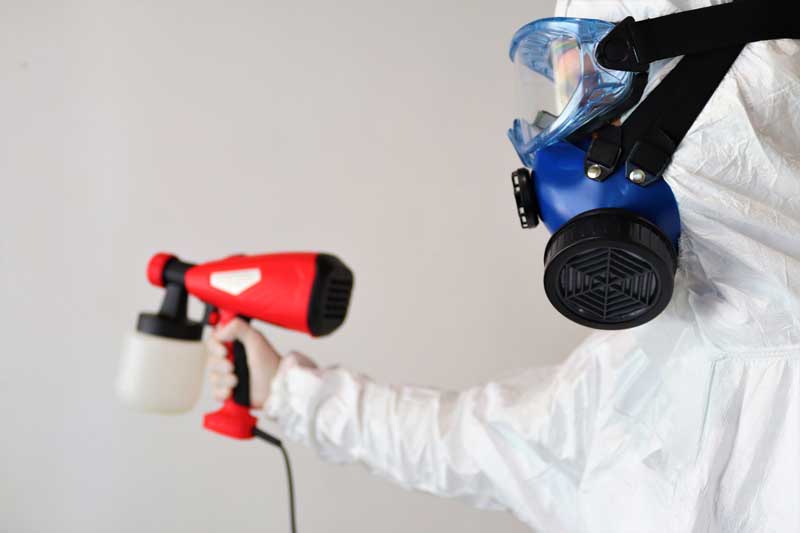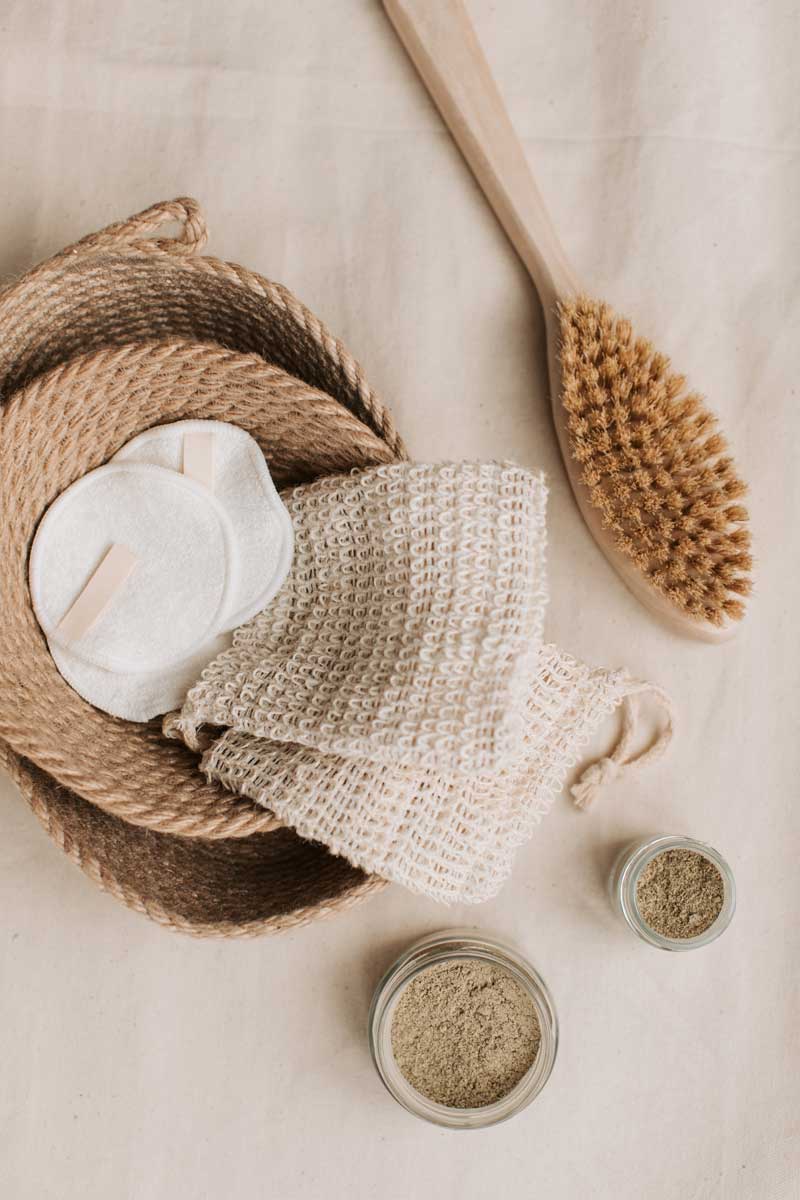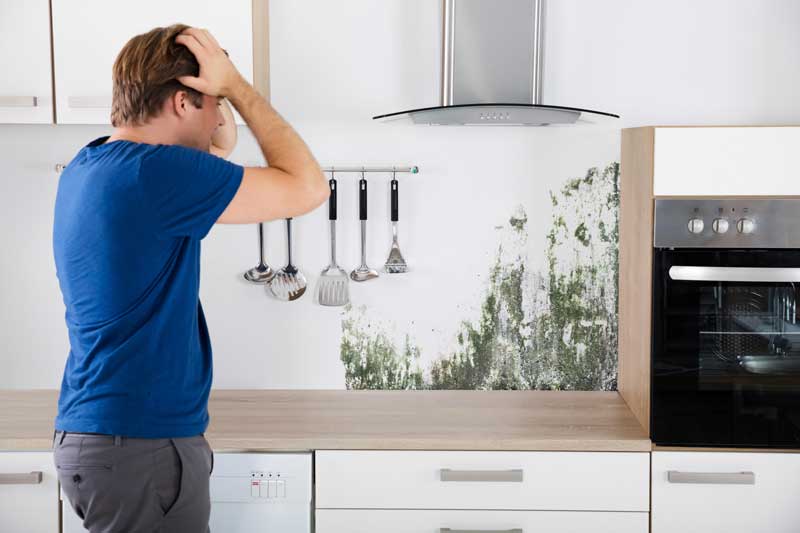Introduction
Discover a world where mold and mildew are no longer your enemies. In the consumer goods industry, these two culprits can cause significant damage, leading to product loss and customer dissatisfaction. This is where Micro-Pak Distribution USA steps in. By understanding the science behind mold and mildew growth on products and implementing effective prevention methods, we can help safeguard your goods from these damaging elements. In this comprehensive guide, we will delve into the causes, conditions, and health effects of mold and mildew. More importantly, we will explore the pivotal role Micro-Pak Distribution USA plays in preventing mold and mildew, how our products work from factory to retail, and provide practical tips on how to prevent mold and mildew growth on various consumer goods. Let’s embark on this journey towards a mold and mildew-free world.
Understanding Mold and Mildew
Mold and mildew are two types of fungi that often cause confusion due to their similar appearance and growing conditions. However, understanding these unwelcome guests can help in effectively preventing their growth on your consumer goods.
Definition of Mold and Mildew
Mildew is a specific kind of mold, usually with flat growth that’s either fluffy or powdery. It appears as a patch of white or grey, often growing on the surface of moist, warm areas. It’s most commonly found on paper, damp fabrics, and the walls of damp environments like basements or bathrooms.
On the other hand, mold is a more potent and dangerous type of fungi. It appears in various colors – black, red, green, blue, or white – and can have a fuzzy or slimy texture. Unlike mildew, it can grow beneath the surface of many materials, especially ones damaged by water.
Causes and Conditions for Mold and Mildew Growth
Mold and mildew thrive in damp, warm environments with poor ventilation. This includes basements, bathrooms, and areas with water damage or high humidity. They can grow on a variety of household surfaces, including wood, ceiling tiles, wallpaper, fabrics, and insulations. Given the right conditions, these fungi can develop on a damp surface within 24 to 48 hours and produce spores that travel through the air.
In the context of consumer goods, products stored or transported in damp conditions can become a breeding ground for mold and mildew. The risk increases in humid climates or during seasonal changes when moisture levels are high.
Health Effects of Mold and Mildew
Mold and mildew are more than just unsightly; they pose potential health risks. Exposure to these fungi can lead to a variety of health issues, including allergies, respiratory problems, headaches, and eye, nose, or throat irritation. Some people, like infants, elderly individuals, pregnant women, and those with existing respiratory conditions, are particularly susceptible.
For consumer goods manufacturers and retailers, preventing mold and mildew is not just about maintaining the quality and appearance of the products. It’s also about ensuring the health and safety of their customers. In the next section, we’ll delve into the role of Micro-Pak Distribution USA in this crucial task.

Role of Micro-Pak Distribution USA in Preventing Mold and Mildew
As the leading distributor of anti-microbial and anti-moisture products in the consumer goods industry, Micro-Pak Distribution USA takes on the challenge of mold and mildew prevention head-on.
Overview of Micro-Pak Distribution USA
Micro-Pak Distribution USA provides innovative and effective solutions for preventing mold and mildew from factory to retail. Their products are designed to protect a wide range of consumer goods, including clothing, footwear, leather goods, and more. The main objective is to ensure that products arrive at retail in optimal condition, free from the unsightly and potentially harmful effects of mold and mildew.
Unique Selling Proposition of Micro-Pak Distribution USA
What sets Micro-Pak Distribution apart from the competition is their commitment to safety and sustainability. Their products are not only effective but also safe for the environment. Since 2010, Micro-Pak has been on a mission to systematically eliminate any negative environmental impacts of their business, participating in initiatives like the Higgs Index to improve their environmental performance.
How Micro-Pak Products Prevent Mold and Mildew from Factory to Retail
Micro-Pak’s products, including antimicrobial stickers and PE sheets, are designed to prevent mold and mildew growth effectively. These products work by controlling the moisture levels within packaging, creating an inhospitable environment for mold and mildew. The Micro-Pak stickers are intended for box-packed items, especially footwear, while the PE Sheets are designed for polybag packed items.
Moreover, Micro-Pak’s Dri Clay and Container Desiccants offer advanced moisture control solutions. Dri Clay is a 100% natural desiccant that protects packaged products from moisture damage. On the other hand, the Container Desiccants are designed to remove moisture from the air inside containers, effectively preventing “container rain,” a common cause of mold growth during transportation.
In a nutshell, Micro-Pak Distribution USA offers an all-around solution for mold and mildew prevention, ensuring that consumer goods reach their consumers in the best possible condition, irrespective of the distance or the conditions of transit.

Prevention of Mold and Mildew on Various Consumer Goods
When it comes to preventing mold and mildew on consumer goods, knowing how to tackle each material type is crucial. Let’s delve into different types of goods and how to best protect them from mold and mildew.
Preventing Mold and Mildew on Clothing and Household Fabrics
For clothing and household fabrics, the key is keeping them dry and well-ventilated. Store your fabrics in a cool, dry place and avoid tightly packing them. Regular cleaning and drying can also prevent mold and mildew growth. Using antimicrobial Micro-Pak® PE Sheets from Micro-Pak Distribution USA is a safe and effective method for preventing mold and mildew on polybag packed items like fabric.
Preventing Mold and Mildew on Leather Goods
Leather goods present a unique challenge due to their porous nature which can absorb moisture and provide a breeding ground for mold. Regular cleaning and conditioning can help deter mold growth. For storage and transportation, consider using antimicrobial Micro-Pak® stickers from Micro-Pak Distribution USA, which are designed for box-packed items, particularly footwear.
Preventing Mold and Mildew on Wood Products
Wood products, being organic, are highly susceptible to mold and mildew. A crucial step in preventing mold and mildew growth on wood products is to ensure they are coated with mold-resistant paint or varnish. For storage and transport, consider using Micro-Pak® container desiccants. These products remove moisture from the air inside containers, preventing what’s known as “container rain,” a common cause of mold growth during transportation.
Preventing Mold and Mildew on Paper and Books
Paper products and books can become a breeding ground for mold and mildew if not stored properly. Keep them in a cool, dry place away from humidity. It’s also essential to ensure adequate air circulation and avoid tightly packing them. For added protection, you could use Micro-Pak® Dri Clay desiccants, which are 100% natural and protect packaged products from moisture damage.
Effective prevention of mold and mildew on consumer goods isn’t just about storing and transporting them correctly. It also involves regular cleaning and maintenance, and employing effective solutions such as those offered by Micro-Pak Distribution USA for an added layer of protection.

Removal of Mold and Mildew from Consumer Goods
When mold and mildew strike, it’s essential to act swiftly to minimize damage and prevent further spread. Let’s explore some effective methods to remove mold and mildew from various consumer goods, from clothing and household fabrics to leather goods, wood products, and paper and books.
Removing Mold and Mildew from Clothing and Household Fabrics
First, take the mold-infested articles outdoors to prevent the spread of spores inside the house. Use a brush or vacuum cleaner to remove as much mold as possible. Remember to dispose of the vacuum bag immediately or clean the canister outdoors. Dry the articles using an electric heater or fan, or sun and air them if possible. If mildew remains, sponge lightly with thick soap or detergent suds and wipe with a damp cloth. You can also use a cloth moistened with diluted alcohol to wipe off the mildew.
Removing Mold and Mildew from Leather Goods
Leather goods infested with mold or mildew can also be cleaned using a cloth moistened with diluted alcohol. If mildew persists, wash the goods with suds made from a mild soap or detergent containing a germicide or fungicide. After cleaning, dry the articles in an airy place and polish with a good wax dressing.
Removing Mold and Mildew from Wood Products
For wood products, the key is to get the wood as dry as possible. Increase air circulation and use heat. If the infection is severe, replacing the wood might be necessary. You can clean the mildewed surfaces by scrubbing them with a mild alkali or disinfectants. Rinse the wood thoroughly after cleaning.
Removing Mold and Mildew from Paper and Books
For paper and books, the cleaning process can be a bit tricky due to their delicate nature. The key is to minimize moisture exposure during the cleaning process. It’s advisable to consult professional cleaning service for severe infestations.
Remember, prevention is always better than cure. Employing preventive measures such as using Micro-Pak® products can help keep your consumer goods mold and mildew-free from the factory to the retail store. These antimicrobial products are designed to prevent mold and mildew, ensuring your goods reach your consumers in optimal condition.

Tips to Prevent Mold and Mildew Growth in Your Home
Whether you’re a consumer goods manufacturer or a homeowner, maintaining a mold-free environment is crucial for the quality of your products and the health of your occupants. Here are some simple yet effective methods to prevent mold and mildew growth in your home:
Keeping Things Clean
Cleanliness is the first line of defense against mold and mildew. Regularly clean high-humidity areas such as bathrooms and kitchens, and don’t forget about your home’s fabrics, upholstery, and carpets. Mold and mildew love to thrive on these surfaces, so frequent cleaning and drying can help keep them at bay.
Getting Rid of Dampness
Dampness is a haven for mold and mildew. Promptly fix any leaks in your home’s plumbing or roof to prevent water accumulation. Additionally, ensure your home is well-drained and water does not pool around your foundation, as this can lead to damp walls and encourage mold growth.
Drying the Air
Humidity control is a key player in mold and mildew prevention. Use dehumidifiers, fans, and open windows to reduce moisture in your home. You can also use products like Micro-Pak® container desiccants, which are designed to remove moisture from the air inside containers, helping to prevent mold and mildew growth on stored goods.
Heating to Remove Dampness
Heating your home, especially during colder months, can help keep dampness at bay. However, ensure your heating system is working properly and does not contribute to humidity levels in your home.
Using Chemicals that Absorb Moisture
Certain chemicals, known as desiccants, can absorb moisture and help keep your home dry. Micro-Pak® offers 100% natural desiccants that can protect packaged products from moisture damage.
Circulating the Air
Good airflow can help keep humidity levels low, preventing mold and mildew growth. Use fans and open windows to promote air circulation, especially in rooms with high humidity levels.
Remember, mold and mildew prevention is not a one-time task. Regular inspection and maintenance are necessary to keep your home and products in optimal condition. By incorporating these tips in your routine, you can effectively prevent mold and mildew growth and ensure the longevity and quality of your consumer goods.
Frequently Asked Questions about Mold and Mildew Prevention
When it comes to mold and mildew prevention, every measure counts. However, it’s normal to have some questions about the best practices and solutions. Here are some frequently asked questions to help you understand how to effectively prevent mold and mildew on your consumer goods.
1. What are the signs of mold and mildew?
Mold appears as a fuzzy substance and can come in various colors such as black, red, or green. It can sometimes resemble ordinary dirt. On the other hand, mildew is powdery and can be white or brown, appearing as small dots on the surface.
2. How can I prevent mold and mildew on my products?
Preventing mold and mildew involves controlling moisture and humidity. Using desiccants, dehumidifiers, and fans can help reduce the moisture in your storage or transportation environment. Regular cleaning and drying of your products can also prevent mold and mildew growth. Products from Micro-Pak Distribution USA offer effective solutions for preventing mold and mildew from factory to retail.
3. Can mold and mildew damage my products?
Yes, mold and mildew can cause significant damage to your products. They can cause discoloration, unpleasant odors, and degrade the material over time, making them unsellable or unusable.
4. Are mold and mildew dangerous to health?
Yes, exposure to mold and mildew can lead to health problems such as allergies, respiratory issues, and in severe cases, more serious health problems particularly for those who are immunocompromised.
5. How can I remove mold and mildew from my products?
Removing mold and mildew involves thoroughly cleaning the affected items and drying them properly. In severe cases, the items might need to be discarded or professional cleaning services may be required.
6. Can I prevent mold and mildew during transportation?
Absolutely. Micro-Pak Distribution USA provides anti-microbial and anti-moisture products such as stickers, PE sheets, dri clay, and container desiccants that are designed to prevent mold and mildew during transportation and storage.
Understanding and addressing these questions can help you take the necessary steps to prevent mold and mildew growth on your products. Remember, prevention is always better than cure, especially when it comes to maintaining the quality of your consumer goods.
Conclusion
Mold and mildew are silent foes that can wreak havoc on consumer goods, impacting both their quality and the reputation of the brand. But with the right knowledge, appropriate measures, and reliable tools, they can be kept at bay, ensuring that your products reach your customers in prime condition.
In this journey against mold and mildew, Micro-Pak Distribution USA stands as a reliable ally. Their innovative, eco-friendly solutions, including antimicrobial stickers, PE sheets, Dri Clay, and container desiccants, are specifically designed to tackle mold and mildew growth, safeguarding your goods from factory to retail.
Remember, maintaining optimal humidity levels, ensuring good air circulation, promptly addressing any leaks, and using mold inhibitors can significantly reduce the risk of mold and mildew growth. With these strategies in place, and the support of Micro-Pak’s products, you can confidently protect your consumer goods from the detrimental effects of mold and mildew.
While this guide provides comprehensive information on preventing mold and mildew, it’s also crucial to stay informed about the latest developments in the field. Micro-Pak’s blog is a great resource for staying updated on the latest news, tips, and advice on mold and mildew prevention.
In conclusion, the battle against mold and mildew is one that demands continuous vigilance. But with the right strategies, tools, and partners, you can ensure that your consumer goods remain mold-free, maintaining their quality and your brand’s reputation. Here’s to delivering the best to your customers, free from the worry of mold and mildew!
References and Resources
Keeping the menace of mold and mildew at bay is a continuous battle, but it’s one that can be won. The world of consumer goods manufacturing and retail is fraught with various challenges, and mold and mildew prevention is a significant one. Fortunately, there are several resources available that can educate and guide you on this journey.
For a comprehensive understanding of mold and mildew, the Centers for Disease Control and Prevention (CDC) provides a wealth of information on their website. This includes detailed insights into the causes of mold and mildew growth, their impact on health, and methods for prevention and removal.
If you’re interested in a more scientific approach, the University of Missouri Extension offers an in-depth guide on How to Prevent and Remove Mildew. This resource covers the science behind mold and mildew, along with practical tips for prevention and elimination in the home.
For hands-on advice on dealing with mold and mildew at home, Better Homes & Gardens offers a practical guide on how to kill mold and mildew, including tips on preventing them from returning.
When it comes to protecting your consumer goods from mold and mildew, Micro-Pak Distribution USA is a leading resource. They offer a range of products designed to prevent mold and mildew growth, from factory to retail. Their offerings include antimicrobial stickers, PE sheets, and container desiccants, all of which are safe and effective for various consumer goods. You can learn more about their products and services on their website.
Remember, prevention is the best cure when it comes to mold and mildew. With the right knowledge, tools, and partners, you can safeguard your consumer goods and ensure they reach your customers in the best possible condition.


Recent Comments